Since I first encountered the art of Hugh Thomson in the 1903 edition of Frances Burney’s Evelina I’ve been looking for more of his artwork both online and in the books in our basement stores. Just as with Yoshio Markino there is a treasure trove of material waiting to be discovered when you first encounter a book illustrator.
In Thomson’s case the fascination lies both in the images themselves and the way they recall half-remembered illustrations from children’s books. As a child I moved from Muffin the Mule to Winnie the Pooh to books on Greek and Roman myths to Marvel comics. Thomson’s illustrations seem to me to be half way between classic book illustrators like Rackham and Greenaway and the great artists in the comics, both British and American.
I found several books illustrated wholly or partly by him: the two J M Barrie plays I’ve written about (here and here), the Highways and Byways of London (part of a travel series – he was involved with several others), poetry by his friend Austin Dobson: Rosina, and others, the Mrs Gaskell novel Cranfield and the illustrations he did for the Jane Austen novels. (I bought a reprint of his heavily illustrated edition of Pride and Prejudice, well worth checking out) And finally (for now) there was of course the 1931 biography of Thomson by M H Spielmann and Walter Jerrold.
Thomson was born in 1860 in Coleraine in Ireland but spent a large portion of his life in and around London. He died in Wandsworth in 1920. For most of his career he was a prolific and successful artist. The rest of this post is a selection of some of the work I have come across.
One of his late commissions, published posthumously was a set of coloured pictures for Nathaniel Hawthorne’s the Scarlett Letter, a historical novel about a woman condemned to wear the letter A on her clothes for conceiving a child out of wedlock.
Hester Prynne while “standing on the pillory scaffold recalls ‘her own face, glowing with girlish beauty, and illuminating all the interior of the dusky mirror in which she had been wont to gaze at it'”. Below she wears the A for adultery:
In 1912 he worked on Oliver Goldsmith’s 1773 comedy She stoops to conquer. We’ve already seen Thomson had a particular liking for 18th century settings .
The play is a tangled story of impersonations, misunderstandings and intrigue over marriage and inheritance. As in Evelina, Thomson captures how we imagine the life and manners of a pre-photographic period. (Thomson studied the history of costume to ensure accuracy).
Below, Kate adopts the dress of a housekeepert.
Which all ends in tears, by the looks of it.
But never mind. There’s flirting:
And dancing of course, before the play has run its course.
“She stoops” was Thomson’s “big book” for the autumn. The next year he did Quality Street after a lunch with J M Barrie who described the pictures as “quite delightful” and Thomson, after his death as “a man who drew affection at first sight.”
Still in the 18th century, Thomson’s pictures for Austin Dobson’s the Ballad of Beau Brocade (1892) – one of several books by Dobson which he illustrated.
Some comedy business with a sedan chair,
and a then a carriage,
After which the young lady needed a bit of lazing around, nodding off in the window seat. William Pitcher singled this picture out for praise noting “with what exquisite lightness and conviction has HT touched in the effect of the short muslin blinds blowing out of (the) window”.
Thomson also worked on Dobson’s collection the Story of Rosina and other verses (1895)
“Harp-prest bosoms” – a fascinating image. This period was one where Thomson was frequently sought after by publishers. One asked him to do Washington Irving’s Old Christmas but he thought he couldn’t better Randolph Caldecott’s version.
Nuns on the trail of a magpie. Why not? (Black and white – did you see what he did there?)
A late piece of work, from 1915, not published at the time:
Caleb Plummer and his blind daughter Bertha from Dickens’s Christmas novella The Cricket on the Hearth (1845)
After Dickens, then Shakespeare. Thomson shows the Merry Wives of Windsor in mischievous good form. (1910).
Tricking Falstaff into the laundry…
and into the water.
That’s all for now. We’ll see Hugh Thomson again. There are still the London pictures and the Austen books, and all the scenes of rural life. But we’ll leave him for the moment.
It was a great period for book illustrators and there are amazing things to be found in the stores of public libraries and online.
Postscript
As I’m writing it’s another bank holiday, just as when I wrote about Thomson and Fanny Burney’s Evelina. This time a wet one, but still conducive to reading and writing and posting lots of pictures. One more:
This wasn’t going to be this week’s post – it was going to be next week’s, but I haven’t quite finished the one which will now be next week’s. I was writing two posts over the weekend and got engrossed in the biography.

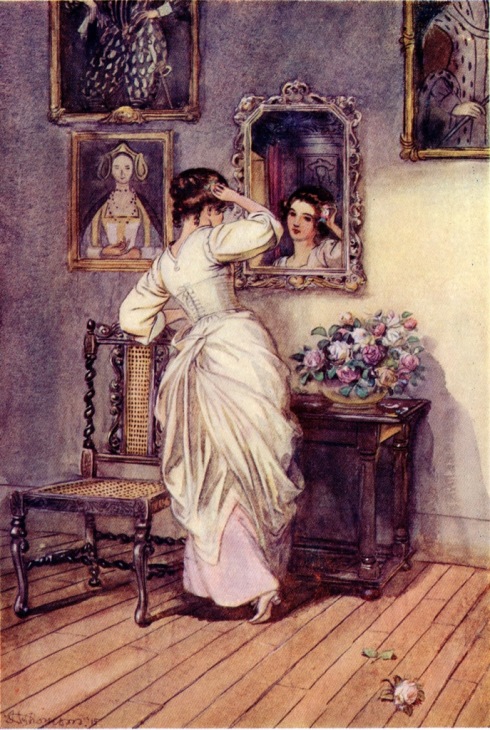
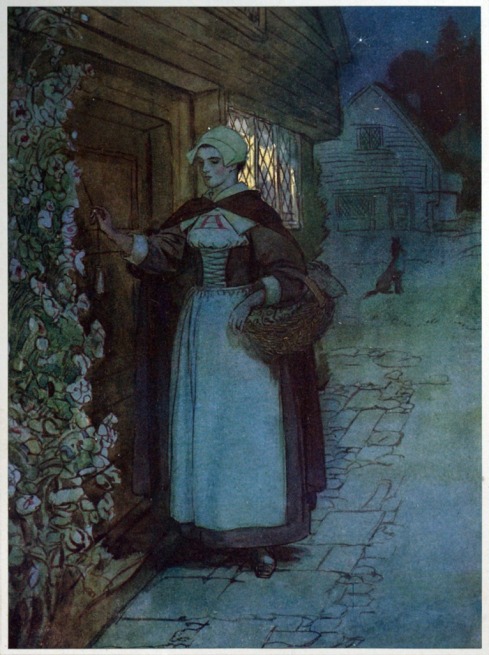
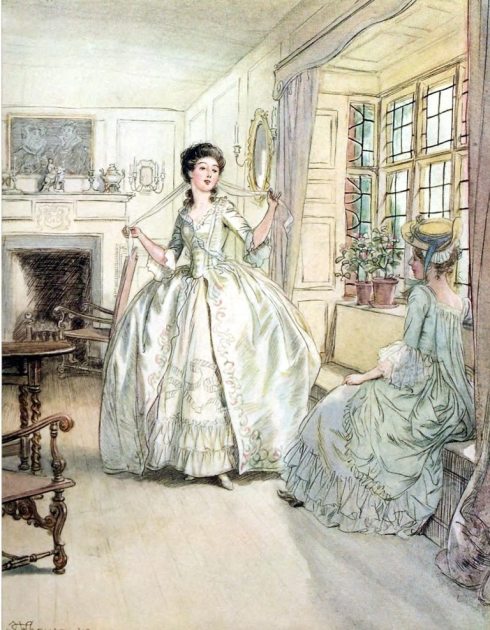
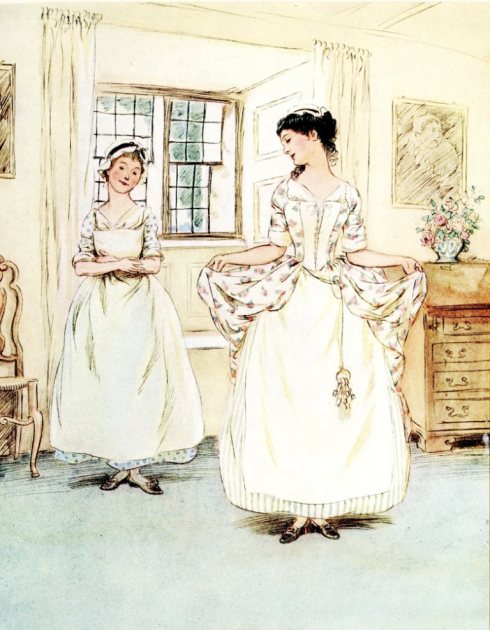
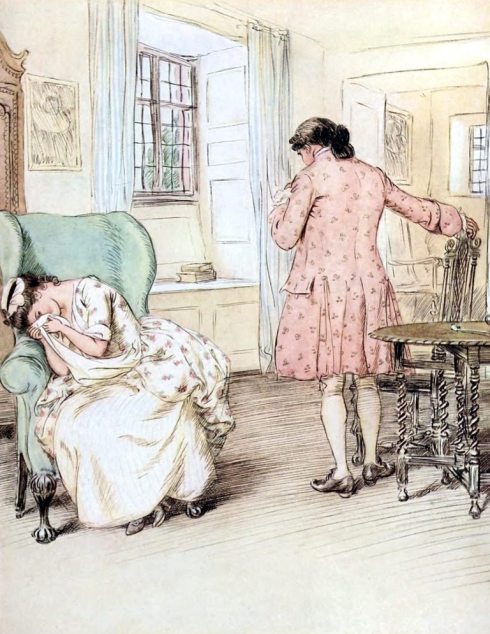

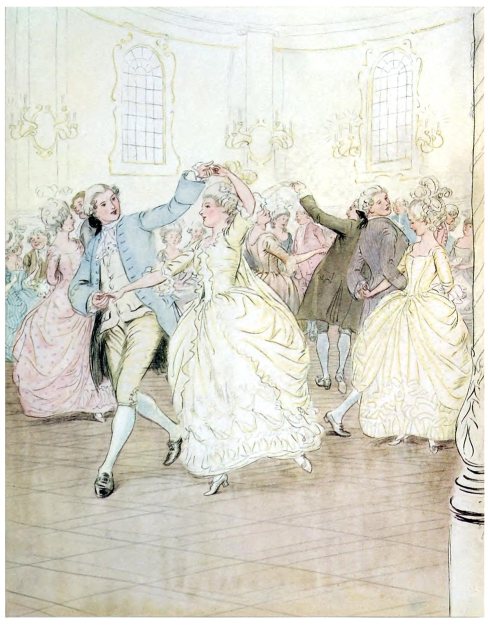
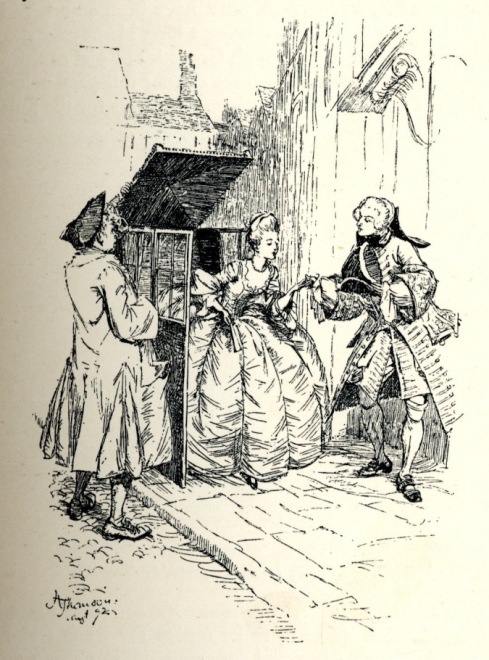
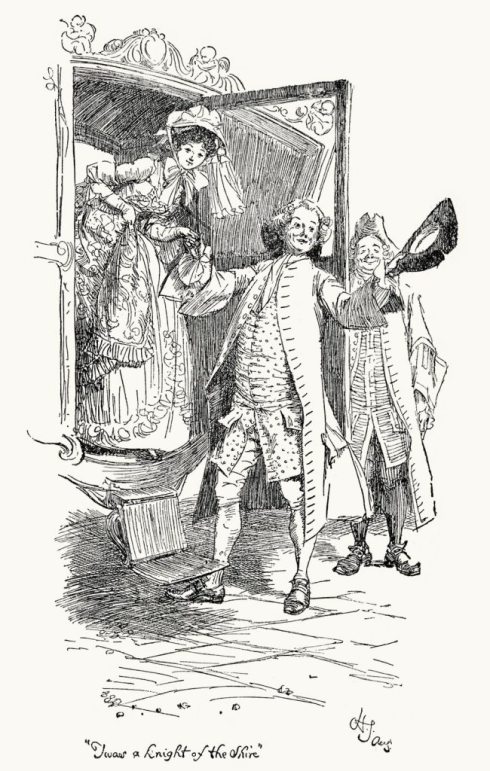
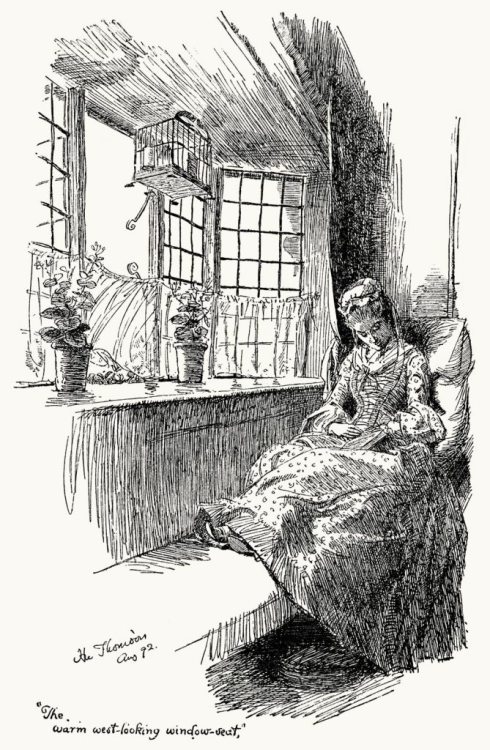
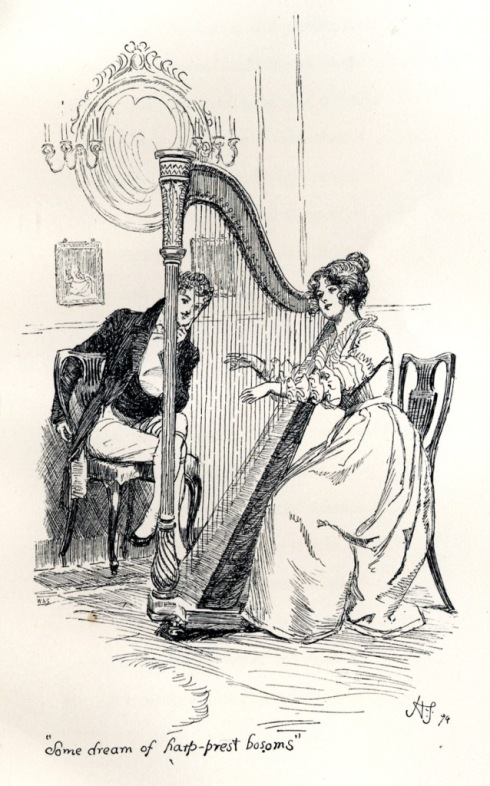
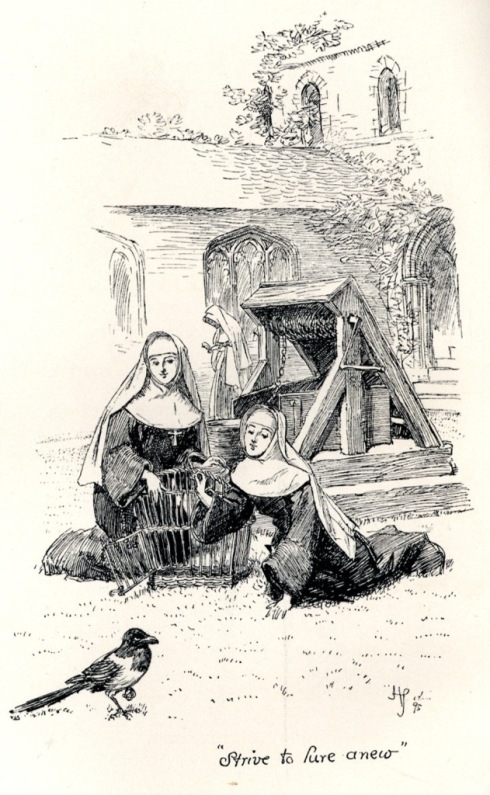
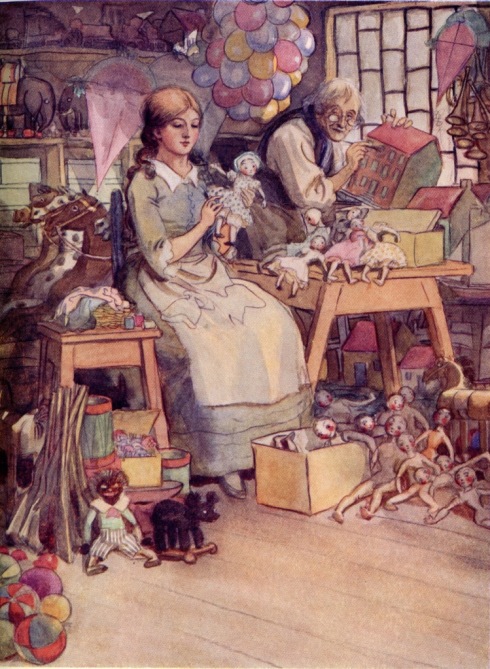
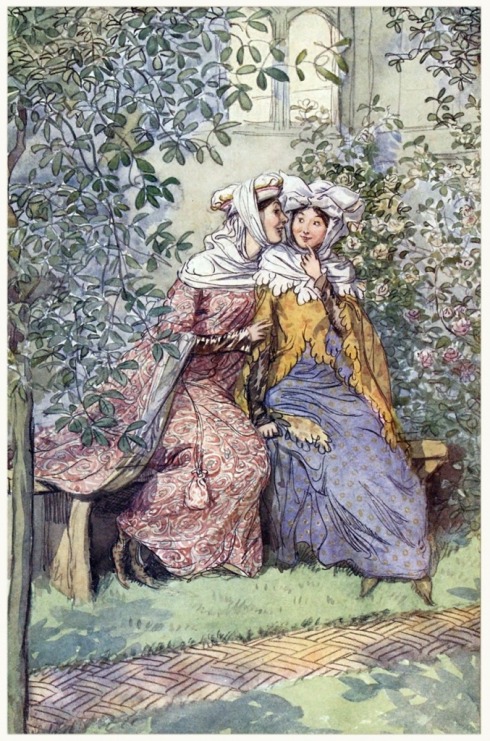
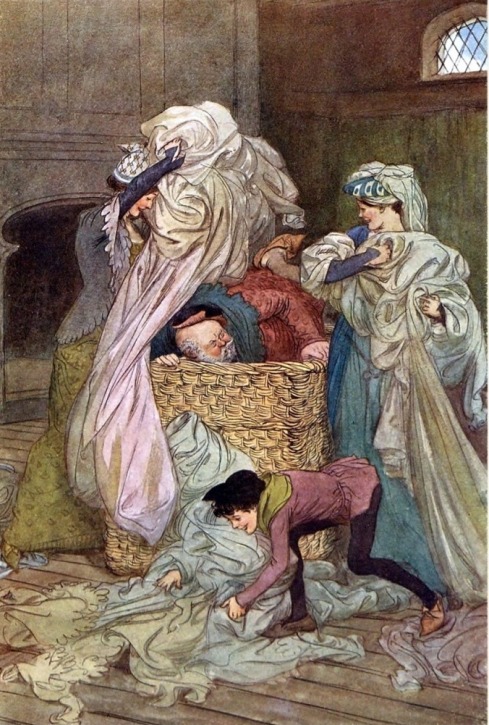




September 3rd, 2015 at 5:04 pm
Beautiful illustrations. Greetings from Italy.
September 12th, 2015 at 4:05 pm
I agree. The illustrations are lovely. Thanks for bringing them to our attention.
September 24th, 2015 at 5:03 pm
[…] antique girls’ books, and Dave Walker presents some of the marvelous historically-based book illustrations of Hugh Thomson […]